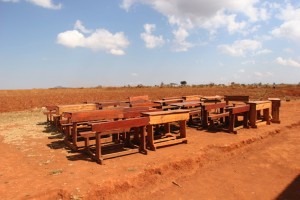Jesuit Commons
In the mid 2000s conversations were starting within the AJCU about a “Messina Commons,” or ways to take advantage of the communication and resource sharing aspects of the World Wide Web to encourage greater collaboration in service of the missions of Jesuit higher education. These conversations were shepherded by Fr. Charles Currie, then President of AJCU, and Fr. Paul Locatelli, then President of Santa Clara University and Global Secretary for Higher Education for the Society. Fr. Locatelli recruited Chris Lowney, a former Jesuit seminarian and former Managing Director of J.P. Morgan, to lead the discussions.
A number of people within CITM were involved in these discussions, and Chris made a presentation about the rapidly evolving ideas at the 2008 meeting at the University of San Francisco.
Jesuit Commons was formally launched in 2009 as a 501(c) (3) organization with Lowney as volunteer President and one paid employee. The Commons’ mission was “to use technology to foster innovative educational and other collaborations across the Jesuit world-wide network in order to benefit extremely poor communities – including refugee communities around the world.” There were two initial projects created to help further that mission.
One project, the Jesuit Commons web site (www.JesuitCommons.org), was intended to be a virtual meeting place where members and friends of the global Jesuit network could find each other, learn about each others’ work and skills, share resources and ideas and collaborate more easily to advance Jesuit projects around the world, and raise funds to support such projects. While the site attracted attention from a number of people who registered and indicated willingness to contribute to projects, the vast majority of these individuals were already extremely busy working on their own projects, and the hoped-for serendipitous coalescing of passionate people around exciting projects never really occurred. The web site was closed after several years to allow the energy required to keep it current and running to be directed to other activities.
However, the original “version 1.0” effort has been followed by other, more targeted initiatives which have harvested its lessons learned: www.jesuitnetworking.org and educatemagis.org
The second project, Higher Education at the Margins, has been much more successful. Under the leadership of International Director Dr. Mary McFarland, JC:HEM (as it’s now known) attracted external funding very quickly and partnered with Jesuit Refugee Services to pilot a model to deliver online courses in locations with extremely limited resources. Within six months of initial funding and overcoming almost unbelievable physical and technical obstacles, JC:HEM staff and volunteers established an online classroom at the Kakuma Camp in Kenya, expanding subsequently to Dzaleka Camp in Malawi and locations in Aleppo, Syria and Amman, Jordan. The first JC:HEM students graduated with a Diploma in Liberal Studies from Regis University in September 2013. In September 2014 a total of 43 students from the Kakuma and Dzaleka camps graduated. The first graduates from the JC:HEM site in Amman, Jordan are expected to graduate in May 2015.
JC:HEM is now revising and expanding their initiatives based on the pilot experience, and it’s ramping up staffing and infrastructure. External funding will allow for the creation of a new curriculum featuring 30 courses that are designed to allow easy customization to reflect the local cultures where the courses are offered. New partners are being added, including the United Nations High Commission for Refugees, St. Aloysius Gonzaga Institute in Taunggyi, Myanmar, and Apu Palamguwan Cultural Education Center in Bendum, Philippines.
Many people have contributed to the success of this initiative, of particular note Cindy Bonfini-Hotlosz, who serves as CIO for JC:HEM and was instrumental in setting up the labs in Kakuma and Dzaleka; Chris Gill and Jim Jones of Gonzaga, who spearheaded the purchase and shipment of equipment to those labs; Pablo Molina, then CIO of the Georgetown Law School, who was on-site at Kakuma to help set up the second lab; and Lisa Davis and Charlie Leonhardt of Georgetown, who were instrumental in establishing learning management and student information systems to support JC:HEM. The CITM donated $10,000 to JC:HEM to support production of a documentary for the pilot period that is expected to be completed in June of 2015.
References
Lowney, Chris, “Jesuit Commons: What It Is and How You Can Help,” Conversations on Jesuit Higher Education: Vol 40, Article 12, 2011 (available at http://epublications.marquette.edu/conversations/vol40/iss1/12).
“Blank Page, Blue Sky, High Risk: An Interview with Chris Lowney, President of Jesuit Commons,” Jesuit Higher Education 1(2): pp. 146 – 152, 2012.
JC:HEM, “2014 Annual Report Executive Summary,” 2014 (available from http://image.jc-hem.org/JCHEM/media/ExecutiveSummary2014-no-letter_Final.pdf).


